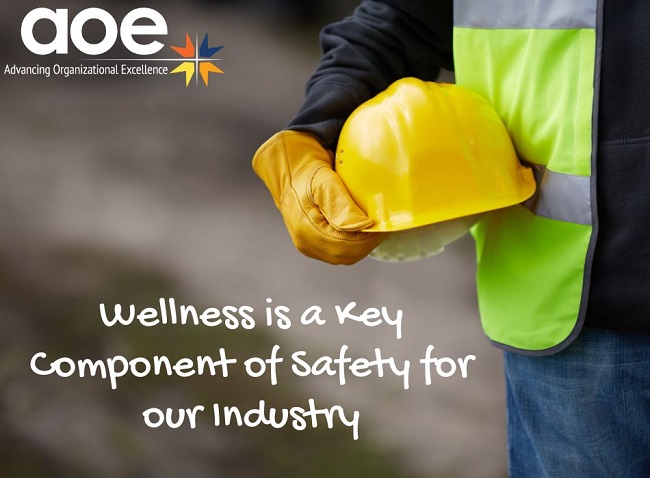
Mental Health & Wellness: Key Components of Safety for Construction Industry
A growing topic of discussion in the industries we serve is mental health. Although safety has long been a core value of the construction industry, wellness is now gaining traction as a much-needed area of focus. Its importance can’t be understated. Nearly 13 percent of workplace injuries are attributed to fatigue, and more than 40 percent of U.S. workers are sleep deprived. There is also a growing area of focus related to mental health as the construction industry ranks second highest in suicide rates among major industries. One in five construction workers struggle with anxiety, depression and/or other mental health issues. Another recent CDC study noted that construction workers are also disproportionately prone to abuse alcohol and drugs — especially opioids, cocaine, and marijuana. This obviously presents a two-fold risk for construction workers because abuse of drugs and alcohol can severely impair physical safety on the job, increasing the chances of a harmful or fatal accident in what is already one of the most dangerous industries.
Although AOE is regularly hired to help our clients communicate about their safety, sustainability and their equity programs, we want to also bring awareness of overall wellness as part of all of these initiatives. May is building safety month and there are also several weeks (Construction Safety Week May 1-5, Building Safety Week May 2-6, North American Occupational Safety and Health Week May 7-13 and National Mental Health Awareness Week May 5/10-16) during the month designed to highlight importance of safety and wellness in our industry. Simply, mental health and wellness are a key component of safety.
So, what is the call to action for our industry? It begins by normalizing mental health issues and that includes having real conversations about stress and anxiety. While keeping up with the evolving narrative about mental health can be tough, empowering workers to seek out resources should be a crucial part of our communications and plans these days. Consider mental health to be as important as wearing safety goggles and hard hats. But mental health woes can be difficult to tackle, thanks in large part to the stigma attached to them.
According to an article in Harvard Business Review, workers who felt supported by their employer in terms of their mental health are less likely to experience mental health symptoms, less likely to underperform and miss work, and more likely to feel comfortable talking about their mental health at work. In addition, they have higher job satisfaction and intentions to stay at their company. Lastly, they had more positive views of their company and its leaders, including trusting their company and being proud to work there. This reinforces the tie between workplace culture and its ability to support mental health at work when done intentionally.
Three things you can do as a leader to promote wellness in your organization
- Create Community: Form a Wellness Committee to encourage wellness as a priority at your organization. The Committee may bring in guest speakers, sponsor a walking challenge or bring in yoga once a week.
- Link to Metal Health Offerings: Check with your healthcare provider about mental health offerings and be sure to remind employees of these options. Don’t assume employees know what is available to them.
- Lead by Example: Let your team see that wellness is a priority for you. This can be done by scheduling workouts on your calendar, being open about when you have anxiety or stress, or modeling work-life balance.
AOE is proud of the work many of our clients are doing in this space and believe so strongly in the mission of wellness that we will personally offer free training to any of our industry partners in mindfulness. I recently was interviewed for the Workforce Today podcast on the topic of corporate mindfulness and I encourage you to listen and share your thoughts with me.

Kimberly Kayler, CPSM, is President of Advancing Organizational Excellence (AOE). Building on almost 25 years serving technical industries in an organizational, strategy and marketing role, Kimberly leads the AOE team and our service offerings. Her experiences as the owner of a marketing agency for 16 years, as well as several years in corporate communications and business development for a nationally-ranked engineering firm, provide her with the perfect mix of industry and consulting experience to meet AOE client needs. In her role at AOE, she ensures best practices are applied to the delivery of all services, the establishment and monitoring of return on investment, as well as service and talent development.






